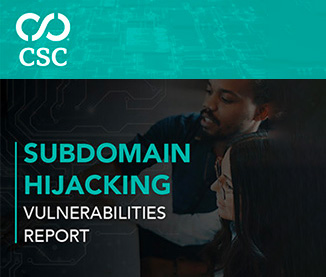

Brand Protection |
Sponsored by |

|



 One of the most common questions I'm being asked these days is from local politicians and economic development folks who want examples of other communities that are tackling and solving the digital divide. I'm able to trot out the big-picture stories because they come to my attention in reading about the industry. As an example, just before I wrote this blog, I read an article that says that the State of Maryland will be providing 150,000 laptops to homes... more
One of the most common questions I'm being asked these days is from local politicians and economic development folks who want examples of other communities that are tackling and solving the digital divide. I'm able to trot out the big-picture stories because they come to my attention in reading about the industry. As an example, just before I wrote this blog, I read an article that says that the State of Maryland will be providing 150,000 laptops to homes... more
 Conventional wisdom within the domain-sales industry states that the stock of unregistered domain names is 'running out,' with limited or no availability of short, desirable domain names across popular extensions (TLDs). This presents problems for would-be brand owners looking for a brand name (and accompanying suitable website presence) to utilize for newly-launched companies... more
Conventional wisdom within the domain-sales industry states that the stock of unregistered domain names is 'running out,' with limited or no availability of short, desirable domain names across popular extensions (TLDs). This presents problems for would-be brand owners looking for a brand name (and accompanying suitable website presence) to utilize for newly-launched companies... more
 In the first quarter of this year, the big cable companies added 482,000 customers, while telcos added over 50,000 customers. In what is a surprise to the industry, that growth has disappeared, and all of the big ISPs collectively lost almost 150,000 customers. That's a loss of 60,000 customers for the cable companies and 88,000 for the big telcos. The following statistics have been compiled by the Leichtman Research Group, which tracks the broadband performance of the largest ISPs in the country. more
In the first quarter of this year, the big cable companies added 482,000 customers, while telcos added over 50,000 customers. In what is a surprise to the industry, that growth has disappeared, and all of the big ISPs collectively lost almost 150,000 customers. That's a loss of 60,000 customers for the cable companies and 88,000 for the big telcos. The following statistics have been compiled by the Leichtman Research Group, which tracks the broadband performance of the largest ISPs in the country. more
 Apple's Wordwide Developers Conference may have just ended, but already, the conference release of Mac's OS X 10.6 — a beta build previewed for developers — has been leaked onto torrent sites. It borders on irony: for years, Mac lovers have touted the superior security of the Mac operating system over Windows, but earlier this year, it was torrent sites — the very sites where OS X 10.6 is now being freely copied — that caused more than 25,000 Mac users to fall victim to the iServices Trojan. Some Macs never learn. more
Apple's Wordwide Developers Conference may have just ended, but already, the conference release of Mac's OS X 10.6 — a beta build previewed for developers — has been leaked onto torrent sites. It borders on irony: for years, Mac lovers have touted the superior security of the Mac operating system over Windows, but earlier this year, it was torrent sites — the very sites where OS X 10.6 is now being freely copied — that caused more than 25,000 Mac users to fall victim to the iServices Trojan. Some Macs never learn. more
 Straightforward out-of-court domain name proceeding can provide efficient relief against fraudulent websites and email. Google has seen a steep rise amid the Coronavirus pandemic in new websites set up to engage in phishing (i.e. fraudulent attempts to obtain sensitive information such as usernames, passwords and financial details). Companies in all industries - not just the financial sector - are at risk from this nefarious practice. But one relatively simple out-of-court proceeding may provide relief. more
Straightforward out-of-court domain name proceeding can provide efficient relief against fraudulent websites and email. Google has seen a steep rise amid the Coronavirus pandemic in new websites set up to engage in phishing (i.e. fraudulent attempts to obtain sensitive information such as usernames, passwords and financial details). Companies in all industries - not just the financial sector - are at risk from this nefarious practice. But one relatively simple out-of-court proceeding may provide relief. more
 At the start of the year, many responsible for managing domain name portfolios may be considering spring cleaning! Traditionally, such a task consists of a review to check that all domains in the portfolio serve a purpose either from a commercial or defensive perspective. The aim is to ensure budget isn't wasted on domains of little to no value. It's fair to say that for many organizations, this is a difficult process - almost as feared as actually spring cleaning our own homes. more
At the start of the year, many responsible for managing domain name portfolios may be considering spring cleaning! Traditionally, such a task consists of a review to check that all domains in the portfolio serve a purpose either from a commercial or defensive perspective. The aim is to ensure budget isn't wasted on domains of little to no value. It's fair to say that for many organizations, this is a difficult process - almost as feared as actually spring cleaning our own homes. more
 Answering questions at the Internet Association's Virtuous Circle conference last week, Secretary Kerry presented the U.S. Department of State's effort to prioritize global digital economy issues abroad in order to reflect the growing importance of these issues in both economic and foreign policy. The State Department has made real progress on this initiative in the last year and hopes to continue our momentum going forward. more
Answering questions at the Internet Association's Virtuous Circle conference last week, Secretary Kerry presented the U.S. Department of State's effort to prioritize global digital economy issues abroad in order to reflect the growing importance of these issues in both economic and foreign policy. The State Department has made real progress on this initiative in the last year and hopes to continue our momentum going forward. more
 GenX-ers may remember spending a summer afternoon at the movie theater and seeing the somewhat corny but beloved antics of Marty McFly and Doc as they used a souped-up Delorean to travel the space-time continuum. In Back to the Future Part II, Doc and Marty travel into the future, where the bullying, boorish Biff causes a time-travel paradox when he steals the Delorean and takes a joyride into the past to give his younger self a sports almanac containing the final scores of decades worth of sporting events. more
GenX-ers may remember spending a summer afternoon at the movie theater and seeing the somewhat corny but beloved antics of Marty McFly and Doc as they used a souped-up Delorean to travel the space-time continuum. In Back to the Future Part II, Doc and Marty travel into the future, where the bullying, boorish Biff causes a time-travel paradox when he steals the Delorean and takes a joyride into the past to give his younger self a sports almanac containing the final scores of decades worth of sporting events. more
 It's that special time again! Time to unwind, spend time with loved ones -- and to reflect on another 12 months of progress across the .brand movement. Over the last few years, we've used this end of year assessment and our efforts with MakeWay.World to show you how the industry is being embraced globally -- through a range of examples, statistics and predictions about how the year ahead will be our best ever. more
It's that special time again! Time to unwind, spend time with loved ones -- and to reflect on another 12 months of progress across the .brand movement. Over the last few years, we've used this end of year assessment and our efforts with MakeWay.World to show you how the industry is being embraced globally -- through a range of examples, statistics and predictions about how the year ahead will be our best ever. more
 Expanding on a framework for quantifying word mark similarity by examining algorithms and proposing enhancements. This article assesses consistency with UK trademark case decisions and a search tool, explores subsequence analysis for similarity, and suggests using IPA phonetics to measure aural likeness. The objective framework could improve consistency in trademark assessments, despite the inherent subjectivity of legal tests. more
Expanding on a framework for quantifying word mark similarity by examining algorithms and proposing enhancements. This article assesses consistency with UK trademark case decisions and a search tool, explores subsequence analysis for similarity, and suggests using IPA phonetics to measure aural likeness. The objective framework could improve consistency in trademark assessments, despite the inherent subjectivity of legal tests. more
 In my recent article on mark similarity measurement, I discussed a possible framework for protecting colour marks. The framework involves the specification of each colour according to its RGB (red-green-blue) specification (in which each component is expressed as an integer value between 0 and 255), with the suggestion that the protection afforded by a colour trademark could incorporate not only this exact colour, but also all similar colours around it up to a certain 'distance'... more
In my recent article on mark similarity measurement, I discussed a possible framework for protecting colour marks. The framework involves the specification of each colour according to its RGB (red-green-blue) specification (in which each component is expressed as an integer value between 0 and 255), with the suggestion that the protection afforded by a colour trademark could incorporate not only this exact colour, but also all similar colours around it up to a certain 'distance'... more
 Central to many intellectual property disputes is an assessment of the degree of similarity of two contested marks. A determination of similarity is fundamentally a subjective decision involving a range of relevant tests, which include consideration of the perception of the relevant consumer and recognition of the existence of degrees of similarity within a spectrum (from high to low). more
Central to many intellectual property disputes is an assessment of the degree of similarity of two contested marks. A determination of similarity is fundamentally a subjective decision involving a range of relevant tests, which include consideration of the perception of the relevant consumer and recognition of the existence of degrees of similarity within a spectrum (from high to low). more
 In the final three articles in my series looking at algorithms for measuring the similarity of marks, I extend the ideas to provide a more sophisticated and adaptable framework. Article 4 introduces a similarity score based on color distance in RGB space, offering a quantitative approach to trademark similarity. Article 5 refines word mark similarity by using the International Phonetic Alphabet to improve phonetic analysis. The final article presents a method for sorting colors by dominant shade, aiding in trademark review and potential guidelines for color mark protection. more
In the final three articles in my series looking at algorithms for measuring the similarity of marks, I extend the ideas to provide a more sophisticated and adaptable framework. Article 4 introduces a similarity score based on color distance in RGB space, offering a quantitative approach to trademark similarity. Article 5 refines word mark similarity by using the International Phonetic Alphabet to improve phonetic analysis. The final article presents a method for sorting colors by dominant shade, aiding in trademark review and potential guidelines for color mark protection. more
 Establishing your brand in an effort to combat counterfeiters on the ever growing and incredibly popular Chinese marketplace Alibaba can seem like a daunting task. Alibaba has grown so popular that it now ships over 12 million packages a day, compared the 3 million shipped by Amazon. Additionally, on Cyber Monday, a popular day for online shopping during the holiday season, Amazon processed 37 million orders. In comparison on Singles Day, an annual holiday in China, Alibaba processed 278 million orders. more
Establishing your brand in an effort to combat counterfeiters on the ever growing and incredibly popular Chinese marketplace Alibaba can seem like a daunting task. Alibaba has grown so popular that it now ships over 12 million packages a day, compared the 3 million shipped by Amazon. Additionally, on Cyber Monday, a popular day for online shopping during the holiday season, Amazon processed 37 million orders. In comparison on Singles Day, an annual holiday in China, Alibaba processed 278 million orders. more
 Marketers far and wide have piled onto the non-fungible token (NFT) craze. To some great success and fanfare, NFTs are being used to promote and monetize media, goods, and services in almost every segment. Media, Fashion, Entertainment, Sports, Gaming, Art, Beverage, Consumer Goods, Financial, and even Enterprise Software companies are getting into the mix. This brief review examines why, how, and where marketers are using NFTs, how NFTs are being abused and gives high-level advice to marketers and brand protection professionals. more
Marketers far and wide have piled onto the non-fungible token (NFT) craze. To some great success and fanfare, NFTs are being used to promote and monetize media, goods, and services in almost every segment. Media, Fashion, Entertainment, Sports, Gaming, Art, Beverage, Consumer Goods, Financial, and even Enterprise Software companies are getting into the mix. This brief review examines why, how, and where marketers are using NFTs, how NFTs are being abused and gives high-level advice to marketers and brand protection professionals. more